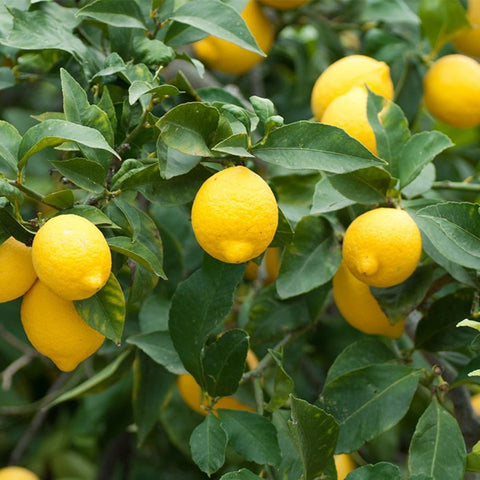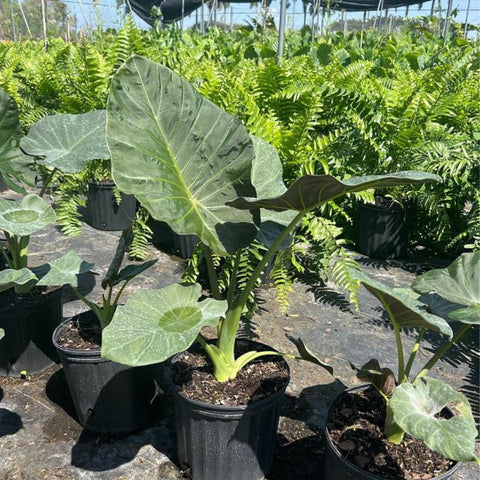Introduction to Crop Rotation and Its Importance in Gardening
Hook: The Transformative Power of Crop Rotation for Thriving Spring Gardens
The onset of spring signals more than just a change in weather; it marks a pivotal period for preparing gardens to bloom. As temperatures rise and daylight extends, gardeners look forward to the blooms and harvest that spring promises. At Plantology, we want to share a secret that seasoned gardeners have used for centuries to cultivate prolific gardens—crop rotation. If you haven’t heard of it or are looking to dive deeper into perfecting your craft, understanding crop rotation can be transformative.
Definition of Crop Rotation
Crop rotation refers to the systematic planting of different crops sequentially on the same plot of land. It's an ancient practice that involves the cyclical planting of plants to maximize soil health and yield benefits. This method counters the depletion of specific nutrients that individual crops may impose on the soil, preventing deterioration and fostering sustainable gardening.Overview of Historical Significance and Modern Relevance
Dating back to early agricultural practices in various civilizations, crop rotation has been pivotal in maintaining soil fertility. By rotating legumes with cereals, for example, ancient farmers found natural ways to replenish nitrogen and maintain land productivity. In our modern world, with urbanization and the rising demand for organic produce, crop rotation has gained renewed importance for sustainable gardening practices.Brief Introduction to the Benefits and Ecological Impact
Incorporating crop rotation into your gardening regimen is beneficial not only for soil health but also for reducing pest buildup, improving yield, and making use of diverse plant properties. Environmentally, crop rotation minimizes reliance on artificial fertilizers and pest control measures, leading to reduced chemical usage and a lesser ecological footprint.Understanding the Science Behind Crop Rotation
The Role of Soil Health in Successful Gardening
Soil is the silent yet dynamic foundation of any flourishing garden. The essence of a plant's growth lies in the condition of the soil. Thus, maintaining soil health through proper practices like crop rotation is fundamental for gardening success.The Nutrient Cycle
Each plant has unique nutritional requirements and gains, taking particular nutrients from the soil while contributing others. For example, legumes such as peas and beans are known to fix nitrogen into the soil, which benefits subsequent crops that require high nitrogen levels. However, planting a single crop tirelessly can rapidly deplete soil nutrients, making the soil barren over time.
Soil Erosion and Structure
Crop rotation can protect against soil erosion and improve soil structure. Different root systems contribute to a more robust soil structure. For instance, deep-rooted plants like carrots help break up the soil, while shallow-rooted plants like lettuce protect the upper layer of the soil.The Benefits of Crop Rotation
Improved Soil Fertility
Through crop rotation, the varied planting sequence enriches soil fertility by balancing nutrient levels naturally. Rotating nitrogen-fixing crops like beans with nitrogen-demanding crops such as corn can rejuvenate soil, reducing the necessity for synthetic fertilizers.Pest and Disease Management
Continuous planting of the same type of crop fosters a habitat conducive to pests and diseases specialized in that crop. Crop rotation disrupts the life cycles of pests and reduces their population by frequently changing their habitat and food sources.Enhanced Biodiversity
By introducing a variety of crops, crop rotation enhances the biological diversity of gardens. This diversity supports a robust ecosystem that promotes beneficial interactions among different species, fostering a balanced environmental habitat.Increased Crop Yield
Well-planned crop rotation not only maintains but can also boost crop yields. By systematically rotating crops, you ensure the soil is always in its best condition for production, leading to healthier plants and superior harvests.
How to Implement Effective Crop Rotation
Understanding Crop Families
One of the first steps in implementing crop rotation is recognizing crop families. Plants in the same family tend to attract similar pests and deplete similar nutrients. Common vegetable families include Solanaceae (potatoes, tomatoes), Fabaceae (beans, peas), and Brassicaceae (cabbage, broccoli).Planning Your Garden Layout
Mapping the Rotation
Prepare a garden layout that allows easy tracking of which crops were planted where in previous years. It's crucial to avoid planting crops from the same family in the same spot each year.Utilizing Cover Crops
Consider using cover crops such as clover or rye during off-seasons. These plants improve soil health by preventing erosion, suppressing weeds, enriching nutrients, and conditioning soil for future planting.Timing and Seasonal Considerations
Recognize that crop rotation is not a one-size-fits-all method. Each garden requires a tailored rotation strategy depending on specific goals, climate, and season. Carefully timing planting can ensure optimal growth conditions for each type of crop.Practical Tips for Spring Crop Rotation
Selecting the Right Crops
For a lush spring garden, Plantology offers a variety of plants that can complement your crop rotation goals. Consider starting with legumes like our [Adonidia Palm](https://plantologyusa.com/products/adonidia-palm-double) for a handsome greenery with nitrogen-fixing benefits.
Documenting Your Progress
Keep a gardening journal to jot down what is working in your soil and what needs improvement. Recording crop yields, pest incidences, and soil conditions year over year helps create a robust rotation plan.Call to Action: Diversify with Plantology Varieties
Discover an array of plants perfect for strategic crop rotation at Plantology. Enhance your gardening experience this spring with unique options like the [Agapanthus Lily of the Nile Blue](https://plantologyusa.com/products/agapanthus-lily-of-the-nile-blue), which adds a touch of perennial beauty to your garden.Potential Challenges with Crop Rotation
Common Missteps
A misstep with crop rotation often stems from misunderstanding plant families or ignoring soil capability. Without proper planning, crop rotation may inadvertently exhaust the soil rather than rejuvenate it.Overcoming Obstacles
When challenges arise, consult crop rotation guides and collaborate with fellow gardeners to adapt strategies. Use soil tests to adjust nutrient applications appropriately, ensuring plants get what they need without over-reliance on fertilizers.Enhancing Your Spring Garden with Additional Techniques
Companion Planting
Combine crop rotation with companion planting to further improve garden health. Pair plants that mutually benefit from each other, such as marigolds with tomatoes to deter nematodes, enhancing garden resilience.
Soil Amendments and Mulching
Incorporate natural soil amendments like compost to further enrich soil organically. Mulching, on the other hand, helps in moisture retention and temperature regulation, providing a supportive environment for cropped plants.Conclusion: Cultivating a Sustainable Future Through Crop Rotation
Embrace the timeless practice of crop rotation not only to elevate your spring garden but also to contribute to a sustainable gardening future. At Plantology, we’re committed to supporting your gardening journey with the finest plant varieties. Whether you are a novice or an expert gardener, aligning your efforts with natural systems will yield prosperous results. For a lush, thriving garden, explore our specially curated selection of crops suited for rotation at [Plantology](https://plantologyusa.com/). Let us help you cultivate excellence from soil to bloom.Conclusion: Cultivating a Sustainable Future Through Crop Rotation
Embrace the timeless practice of crop rotation not only to elevate your spring garden but also to contribute to a sustainable gardening future. At Plantology, we’re committed to supporting your gardening journey with the finest plant varieties. Whether you are a novice or an expert gardener, aligning your efforts with natural systems will yield prosperous results. For a lush, thriving garden, explore our specially curated selection of crops suited for rotation at [Plantology](https://plantologyusa.com/). Let us help you cultivate excellence from soil to bloom.A Deeper Dive into Crop Rotation Techniques
Categorizing Crops by Nutrient Demand and Contribution
Understanding the nutrient demands and contributions of various crops is integral to effective rotation. Crops can generally be sorted into groups based on their nutritional requirements:
- Heavy Feeders: Crops like corn, tomatoes, and squash have high nutrient requirements. They consume significant amounts of nitrogen, phosphorous, and potassium from the soil.
- Moderate Feeders: Plants such as carrots, beets, and onions require fewer nutrients than heavy feeders but still benefit from rich soil.
- Light Feeders: Examples include herbs and lettuce, which have minimal nutritional demands.
- Nutrient Givers: Legumes such as peas and beans are known for their ability to fix nitrogen into the soil, enhancing fertility for subsequent plantings.
Advanced Crop Rotation Schemes
Sophisticated rotation schemes can address specific garden goals and constraints:- Four-Year Rotation: A longer cycle that allows for detailed planning, including the integration of cover crops. Begin with heavy feeders, follow with legumes, then root vegetables, and finally light feeders.
- Layered Rotation: For gardens with varied elevations or terraces, rotating crops horizontally and vertically enhances soil microclimates, benefiting both plant growth and soil recovery.
- Polyculture Rotation: Integrating multiple crops that mutually support each other can be especially effective in small spaces. For instance, planting nitrogen-fixing legumes amidst heavy feeders can sustain productivity even in compact areas.

Case Study: Successful Crop Rotation in Commercial Farming
To illustrate the benefits and implementation of crop rotation on a commercial scale, consider the case of an organic farm in California. Known for its diversity in product offerings, the farm started employing a meticulous crop rotation strategy. By rotating crops like tomatoes (heavy feeders) with cover crops like clover (nitrogen fixers) every two years, the farm witnessed a 20% increase in yield after three years. Moreover, pest issues decreased significantly—reduced aphid populations, in particular, were observed due to the interruption of their life cycle. The introduction of flowering plants in alternate rows also attracted beneficial insects, further enhancing pest control.Integrating Technological Innovations and Traditional Practices
Utilizing Technology for Precision Agriculture
Modern technology can significantly augment traditional crop rotation strategies through tools such as:- Soil Sensors: Real-time monitoring of soil moisture and nutrient levels guides gardeners in implementing changes in crop rotation schedules and understanding the immediate impact of different crops on soil health.
- GIS Mapping: Geographic Information Systems provide detailed data on soil composition across large areas, enabling precise identification of suitable crops for specific zones.
- Mobile Apps for Record Keeping: Applications like SmartGarden and Garden Manager allow gardeners to record plant growth, yields, and incidents of pests or disease, assisting in the analysis of long-term crop rotation effectiveness.

Environmental and Ethical Considerations
Promoting Biodiversity and Ecosystem Health
Crop rotation enhances biodiversity not just by increasing the variety of cultivated plants but also by nurturing a wider range of soil microorganisms and insects. This integration of flora and fauna leads to a more resilient ecosystem capable of withstanding environmental stresses such as droughts and diseases.Ethical Gardening
Crop rotation fosters ethical gardening practices, encouraging compost fertilization over synthetic solutions and promoting healthier growth methods. This aligns with global movements toward sustainable and responsible agriculture, ensuring that gardening not only meets human needs but also respects ecological balances.Further Reading and Resources
To further enrich your understanding and application of crop rotation techniques, consider exploring the following resources: Engage with these texts to explore deeper into the subject and keep abreast of new advancements and methodologies in sustainable gardening.






























Comments (0)
There are no comments for this article. Be the first one to leave a message!